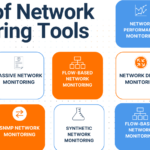Alternatives to Amazon Redshift: Top Competitor Analysis

In the rapidly evolving landscape of cloud data warehousing, Amazon Redshift has emerged as a leading solution, offering scalable storage and powerful computing capabilities. However, as businesses grow and their data management needs become more complex, many are looking for alternatives to Amazon Redshift that better align with their specific requirements. This comprehensive analysis explores the top competitors in the market, delving into their unique features, advantages, and how they compare to Amazon Redshift.
- Snowflake: A Cloud Data Platform for Diverse Data Workloads
- Google BigQuery: Serverless, Highly Scalable, and Cost-Effective Data Warehouse
- Microsoft Azure Synapse Analytics: Unified Analytics Service
- Teradata: Scalable Database for Enterprise Analytics
- Oracle Autonomous Data Warehouse: Self-Driving Data Management
- IBM Db2 Warehouse: AI-Powered Data Management
- SAP Data Warehouse Cloud: Business-Centric Data Management Solution
- Cloudera Data Platform: Enterprise Data Cloud
- Exasol: High-Performance In-Memory Database
- Vertica: Advanced Analytics Database
- Yellowbrick Data Warehouse: Hybrid Cloud Data Warehouse
- Databricks: Unified Data Analytics Platform
- CockroachDB: Resilient, Scalable, Distributed SQL Database
- Greenplum: Open Source Massively Parallel Data Platform
- SingleStore (formerly MemSQL): Database for Operational Analytics and Cloud-Native Applications
Snowflake: A Cloud Data Platform for Diverse Data Workloads
Snowflake stands out among alternatives to Amazon Redshift for its innovative architecture that separates compute from storage, enabling users to scale each independently. This flexibility allows businesses to efficiently manage data workloads of varying sizes and complexities without incurring unnecessary costs. Snowflake's support for multi-cloud environments, including AWS, Azure, and Google Cloud, further enhances its appeal by offering businesses the freedom to operate across different cloud platforms. Its user-friendly interface and advanced data sharing capabilities make it a strong contender for organizations looking to foster collaboration and access insights in real-time.
Google BigQuery: Serverless, Highly Scalable, and Cost-Effective Data Warehouse
Google BigQuery presents a compelling option among alternatives to Amazon Redshift with its serverless data warehouse solution that automatically manages infrastructure, allowing users to focus on analyzing data rather than managing servers. BigQuery's pay-as-you-go pricing model offers cost efficiency, particularly for businesses with fluctuating workloads. Its high scalability and integration with Google's analytics and machine learning tools make it an attractive choice for organizations looking to leverage advanced analytics and AI capabilities.
Microsoft Azure Synapse Analytics: Unified Analytics Service
As a unified analytics service that blends big data and data warehousing, Microsoft Azure Synapse Analytics is a noteworthy alternative to Amazon Redshift. It offers a seamless experience across data integration, enterprise data warehousing, and big data analytics. Azure Synapse provides deep integration with other Microsoft services, including Power BI and Azure Machine Learning, creating a robust ecosystem for businesses heavily invested in the Microsoft stack. Its ability to handle massive datasets and real-time analytics positions it as a versatile solution for complex data landscapes.
Teradata: Scalable Database for Enterprise Analytics
Teradata is a veteran in the data warehousing space, known for its high-performance analytics capabilities. It distinguishes itself among alternatives to Amazon Redshift through its scalable architecture that supports high volumes of concurrent users and complex queries without compromising performance. Teradata's comprehensive suite of tools for data management, analytics, and machine learning makes it a powerful option for large enterprises with extensive data warehousing needs.
Oracle Autonomous Data Warehouse: Self-Driving Data Management
Oracle Autonomous Data Warehouse leverages advanced AI and machine learning to automate database tuning, security, backups, and updates. This self-driving data warehouse is a significant alternative to Amazon Redshift for businesses looking to reduce administrative overhead and focus on strategic initiatives. Oracle's performance optimizations and strong security features cater to enterprises with demanding data workloads and stringent compliance requirements.
IBM Db2 Warehouse: AI-Powered Data Management
IBM Db2 Warehouse offers a cloud data warehouse solution that integrates AI capabilities to enhance data management and analytics. Among alternatives to Amazon Redshift, Db2 Warehouse is recognized for its in-database analytics, allowing users to perform complex queries and machine learning models directly within the database. This reduces data movement and accelerates insights. IBM's commitment to open standards and support for multicloud environments makes Db2 Warehouse a flexible choice for businesses leveraging diverse cloud strategies.
SAP Data Warehouse Cloud: Business-Centric Data Management Solution
SAP Data Warehouse Cloud is designed with a business-centric approach, offering a unified data and analytics environment that simplifies data management across the enterprise. As an alternative to Amazon Redshift, it stands out for its integration with SAP's extensive suite of business applications, providing seamless access to data for real-time decision-making. Its user-friendly interface and powerful semantic layer enable business users to create data models and insights without deep technical expertise.
Cloudera Data Platform: Enterprise Data Cloud
Cloudera Data Platform (CDP) is an integrated data platform that delivers a secure and efficient way to manage and analyze data across hybrid and multicloud environments. Among alternatives to Amazon Redshift, CDP is notable for its comprehensive data lifecycle management, from edge to AI. It supports a wide range of analytics on diverse data types and sources, making it suitable for businesses looking to leverage data for competitive advantage.
Exasol: High-Performance In-Memory Database
Exasol's in-memory database technology offers exceptional performance for analytics and data warehousing. As an alternative to Amazon Redshift, Exasol is engineered for speed, scaling to petabytes of data while providing fast query responses. Its ability to integrate with various data sources and analytics tools makes it a versatile platform for organizations aiming to accelerate their data-driven decision-making processes.
Vertica: Advanced Analytics Database
Vertica is designed for use in data warehouses and other big data workloads, offering high-speed, advanced analytics on massive volumes of data. Among alternatives to Amazon Redshift, Vertica is recognized for its columnar storage architecture, which significantly improves query performance and storage efficiency. Its robust support for machine learning and predictive analytics within the database enables businesses to uncover insights more quickly and accurately.
Yellowbrick Data Warehouse: Hybrid Cloud Data Warehouse
Yellowbrick Data Warehouse is a modern solution that supports hybrid cloud environments, allowing businesses to leverage the benefits of both on-premises and cloud deployments. As an alternative to Amazon Redshift, Yellowbrick stands out for its high performance and scalability, catering to enterprises with demanding data workloads. Its compatibility with popular BI and analytics tools ensures seamless integration into existing data ecosystems.
Databricks: Unified Data Analytics Platform
Databricks offers a unified data analytics platform that brings together data engineering, collaborative data science, full-lifecycle machine learning, and business analytics. This alternative to Amazon Redshift is built on top of Apache Spark, providing high performance for both batch and streaming data workloads. Databricks' collaborative workspace and MLflow for machine learning lifecycle management make it an attractive choice for teams looking to innovate with data.
CockroachDB: Resilient, Scalable, Distributed SQL Database
CockroachDB is a distributed SQL database designed for cloud-native applications, offering automatic replication, horizontal scalability, and strong consistency across multiple geographical locations. As an alternative to Amazon Redshift, CockroachDB is well-suited for businesses requiring high availability and resilience for their transactional workloads. Its compatibility with the PostgreSQL wire protocol ensures easy migration and integration with existing tools and applications.
Greenplum: Open Source Massively Parallel Data Platform
Greenplum is an open-source, massively parallel processing (MPP) data platform that provides powerful analytics on large datasets. Among alternatives to Amazon Redshift, Greenplum is valued for its ability to run sophisticated analytical queries against petabytes of structured and unstructured data. Its open-source nature and compatibility with Hadoop and other big data technologies make it a cost-effective solution for organizations looking to scale their data analytics capabilities.
SingleStore (formerly MemSQL): Database for Operational Analytics and Cloud-Native Applications
SingleStore, formerly known as MemSQL, is a distributed SQL database that excels in real-time analytics and operational intelligence. As an alternative to Amazon Redshift, SingleStore offers a unique combination of in-memory rowstore and on-disk columnstore, enabling fast analytics and transaction processing on the same platform. Its ability to handle high-velocity, high-volume data makes it ideal for applications requiring real-time insights.
While Amazon Redshift continues to be a powerful solution for data warehousing, the landscape is rich with alternatives to Amazon Redshift that cater to a wide range of data management and analytics needs. Whether your priority is flexibility, cost-efficiency, performance, or specific features, there is likely a competitor that meets your requirements. By carefully evaluating each option, businesses can select the best data warehousing solution to support their data-driven initiatives and drive growth.





Leave a Reply